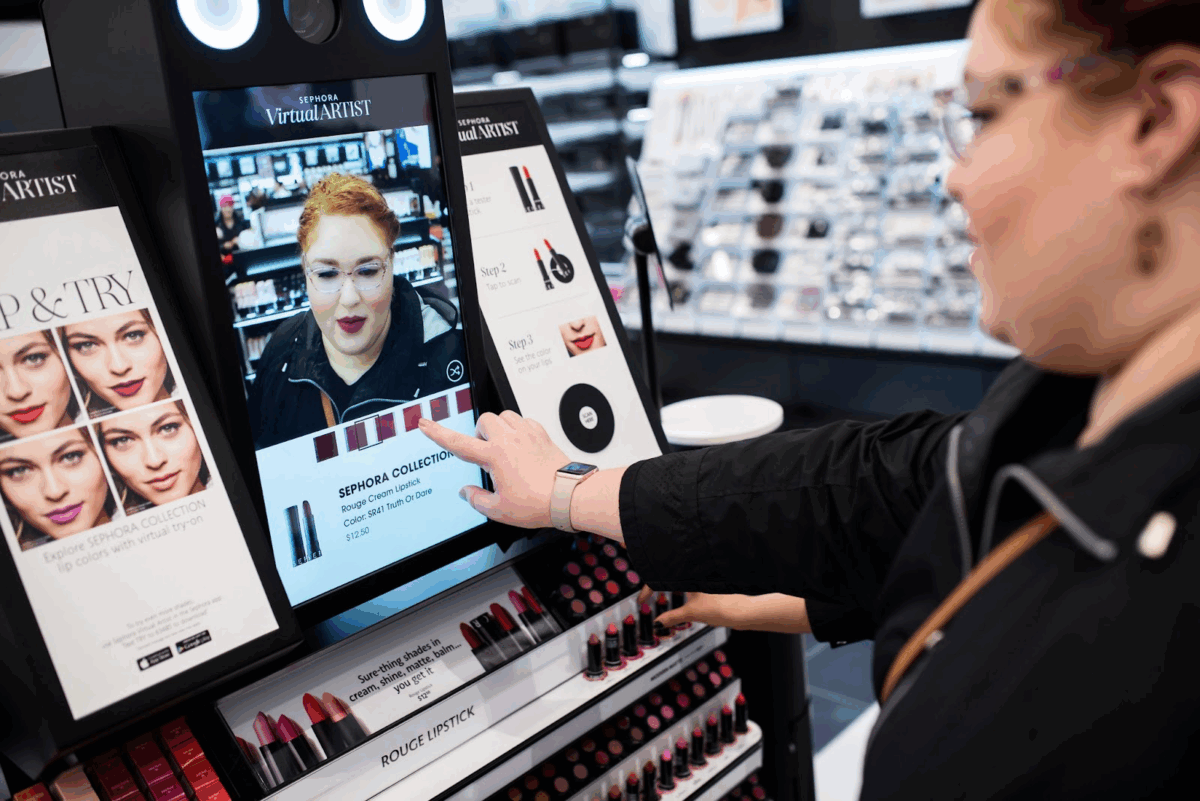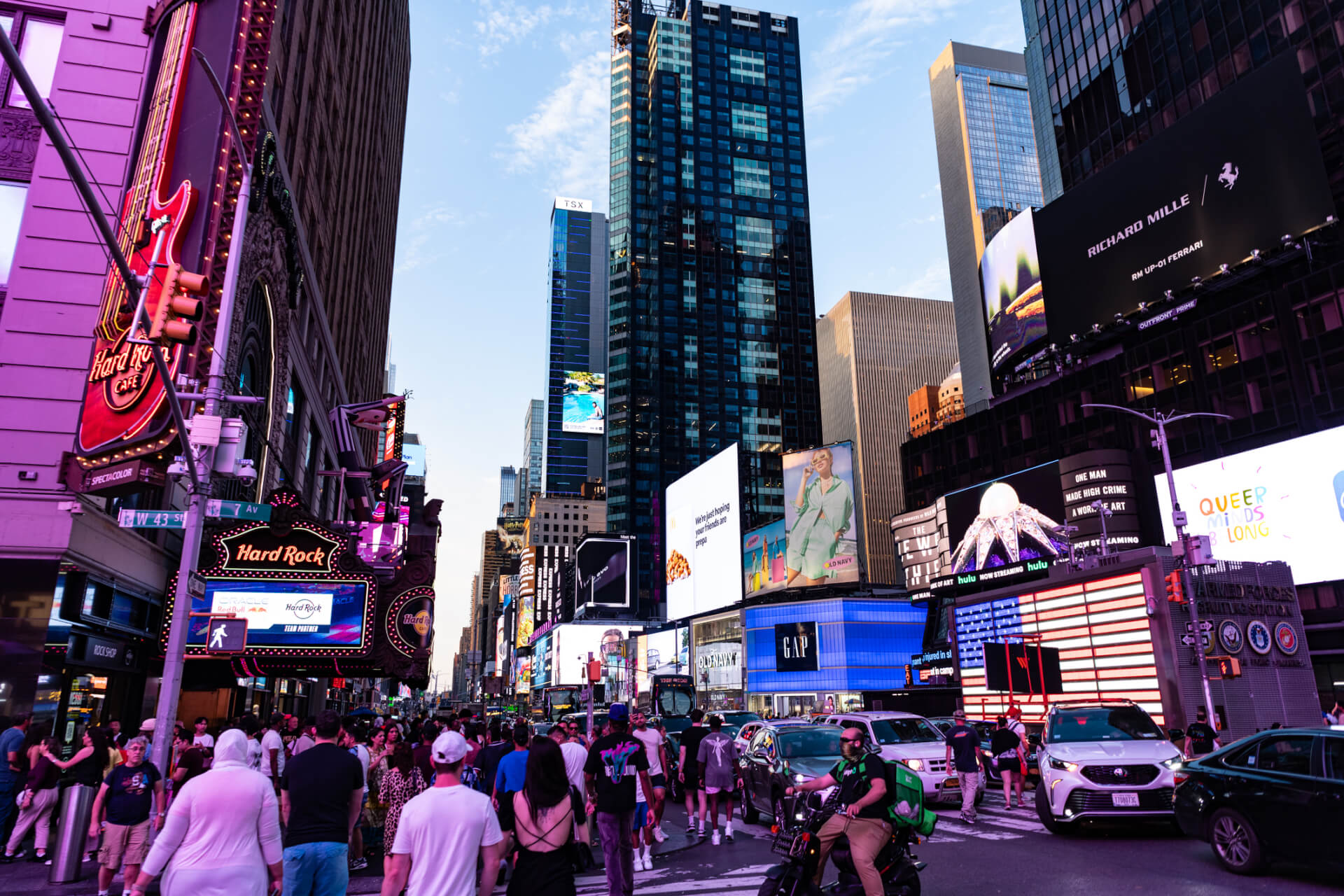| October 11, 2021
Why in-store signage advertising belongs in every brand’s retail media strategy
Raise your hand if you’ve ever set foot in a grocery store and picked up a few extras that weren’t on your grocery list. Maybe you were tempted by a tasty-looking bag of chips at checkout or remembered to grab the dish soap because some in-store signage reminded you it was on sale. Impulse purchases happen all the time, even when we’ve got a plan when heading into a store. After all, we’re much more likely to snap up a few add-ons on a whim if we’re already shopping. The temptation can be harder to resist.
Consumer packaged goods brands know that capitalizing on these moments of impulse are great opportunities to give sales a boost, not to mention stay top of mind with customers while they’re out and about. But the world is oversaturated with messaging, so how do you stand out against the competition and create a memorable experience that stays with your customer? There are many ways to go about this, but one of the most pivotal steps you can take is by including in-store signage messaging as part of your omni-channel strategy, using helpful, handy in-store displays to drive sales. Delivering unique, compelling ads to consumers while they’re on site and ready to spend means you get to be a part of the consumer experience every step of the way.
Reaching a receptive audience inside the store
By and large, when people are out shopping, they’re focused on the task at hand: getting what they need, and preferably efficiently. It’s part of why shoppers tend not to look at their phones much in the store unless for a price comparison or to check the shopping list. The action unfolds in real-time, and that demands a level of presence that makes checking your phone inconvenient. For brands, this makes the brick and mortar retail environment an exciting opportunity to reach customers who are undistracted.

Changes to buying habits have demonstrated that now, more than ever, a little extra push is sometimes needed to complete the sale. Several factors brought on by the pandemic have led to major changes in the ways people shop—mainly where they’re shopping.
For instance, in our pre-pandemic lives, waltzing into a grocery store to grab what we needed was the standard. But that changed with the introduction of coronavirus rules around hygiene, capacity limits, and physical distancing requirements. Suddenly, shopping for groceries was a more stressful experience, one that involved a greater time commitment and even a wait in line before getting into the store.
While this was happening, shoppers sought out more convenient options, with many turning to the internet. Instead of blocking off an excessive amount of time to go get the groceries, people making use of e-commerce didn’t have to leave home and, often, could take advantage of same-day delivery to boot.
All this means that in order to entice people to go back to shopping in stores, it’s important to try and deliver a more convenient and information-rich experience, similar to what is found online. And while in-store signage and point-of-purchase displays have always been used to attract and target audiences shopping in-store, digital displays in particular offer new opportunities to brands looking to get their content in front of buyers at the right moment.

In-store advertising and the death of the cookie
Another change to buying habits is coming thanks to restrictions on how advertisers can target their messaging in the online space. For privacy reasons, big tech companies and web browsers have begun to move away from the use of third-party cookies to collect consumer data. Some web browsers have already ceased gathering third-party data, and a full phase-out is expected to come into full effect by 2022. This will mean consumers will have to opt in if and when they want to share their data with brands. For marketers, media buyers, agencies, and brands, that means customer insights won’t be as easily available, and so creating hyper-targeted campaigns may become even more challenging.
But the absence of third-party data means now is the time for in-store advertising strategies to really shine. In-store advertising gives your brand the potential to reach consumers right when they are likeliest to spend. When partnered with other omnichannel marketing strategies like digital marketing or shelf placement, a compelling message delivered on in-store digital signage can deliver a big push to turn visitors into buyers.
Rethinking retail with omnichannel advertising
The pandemic’s impact on retail is no longer news—now, it’s time to analyze the ways that brands intend to incorporate the past couple of years of learnings into a new vision of what retail should be.
A key finding from a recent survey by Inmar Intelligence is that more retailers will be investing in on-site media offerings in the coming years. The main reasons? A desire to drive sales and diversify revenue. As brands start to develop their own digital messaging apparatus, this opens up a world of possibility.

Say a customer was exposed to an ad prior to their arrival at a store. Through in-store signage, brands can build content that reinforces that message while the shopper is on premises. Digital displays will usually be installed at high-intent locations throughout a store, in order to optimize the effectiveness of the messaging.
By coordinating these in-store ads with ads deployed across online channels, it’s possible to create a unified message that drives improvement to both online and brick and mortar sales. It’s a chance to build stronger campaigns, in other words, by placing your brand in front of people in a high-value, high-trust environment.
Delivering contextual media with in-store displays
In-store signage has an advantage over other ad formats for its capacity to open the door for more contextual opportunities. What resonates most with CPG brands and their buyers is messaging that tells a story, creating a more favourable perception of your brand in the mind of consumers.
Launching an effective digital retail signage campaign directly in-store isn’t just a powerful way to reach customers when they’re in a buying mindset. It’s also a way to create a lasting moment that connects them to the brand. The right contextual storytelling has the power to make a lasting impression and positively influence buyer behaviour.
Customers are savvy, and by working in a contextual component to your advertising, you can help give them an experience that strikes a chord. Beyond that, contextual digitized in-store signage can work in concert with other marketing assets, such as in-store product shelf placement, flyer ads, coupons, or even digital ads, thus helping to create a more cohesive customer journey, moving from one message to the next depending on their location.

Digital signage advertising also gives brands the added opportunity to harness audience data for better relevance and more creativity. For example, demographic data can give you a better sense of who’s shopping and when. Messaging can then be adapted to suit, say, the stay-at-home parent crowd during the daytime, while catering ads during evenings and weekends to young professionals. Being able to track how these data change with the seasons, as holidays approach, and in response to current events can help you to flex your creative muscle and always keep your messaging up-to-date and relevant to different audiences at different times in a single location.
The power of dynamic content
While you’re at it, digital signage gives you the tools you need to take the storytelling aspect of your campaigns even further. Unlike other traditional ad formats, digital signage opens up the possibility to run dynamic content that takes the storytelling even further.
Through programmatic ad buying, the process of using contextual triggers like the weather, sports, or traffic can create a memorable moment in the eyes of your customers, thus influencing them to move forward with a purchasing decision. For example, a drop in temperatures is an opportune moment to market hot chocolate or soup, while running an ad before a big sports event might encourage you to offer a promo on chips and other gameday goodies. There’s really no limit to what can be accomplished with the dynamic capabilities offered by in-store signage.

Comparing in-store signage media costs to other channels
One of the most concrete reasons why more brands are turning to in-store signage is that, unlike other ad formats, it can be a fairly marketing-budget-friendly solution. The CPM, or cost per thousand impressions, is fairly low in DOOH as compared with online channels, television, etc.
Given the high costs surrounding digital advertising, media buyers and agencies are thinking about ways to reallocate some of the marketing budgets to best reach out-of-home audiences. With a high-exposure medium such as in-store signage, an advertising campaign can reach a wide audience for less.
Quick recap: Why you should start in-store digital ad campaigns
Already, we’re starting to witness a change to retail, as stores try to get buyers back in their stores and shift away from competitors in e-commerce. In the coming months, we’re expecting to see CPGs continue to make these changes by investing in in-store content as a way to modernize the shopping experience and create a more enjoyable and tailored experience for shoppers.
By investing in digital in-store signage advertising:
- You signal to consumers that your CPG business or media buys are adapting your omnichannel campaign strategy to suit the changes taking place in retail.
- You’ll overcome some of the major obstacles faced by brick-and-mortar retail given the rise in popularity of e-commerce.
- You can reach customers through an innovative and creative channel, one that can be tailored to suit the time of day and enhances a customer’s relationship to your brand through contextual storytelling.
- You put your marketing dollars towards a more cost-effective solution than many other advertising channels.
The world is changing quickly, and those in the retail sector have seen the lasting impact of a changing world, even in just the last year. These changes are only going to continue, as brick-and-mortar shopping evolves to keep up the pace with the increasing convenience of online shopping. For this reason, meeting your consumers where they are by using an innovative solution like digital retail signage is a necessary component of adapting to the changing times in retail.
Including in-store signage messaging as a part of an omnichannel strategy is pivotal in driving revenue and taking steps towards building lasting and nurturing loyal relationships with consumers, as well as in ensuring your CPG business stays relevant in consumers’ minds.
Supercharge your next campaign with in-store digital advertising







